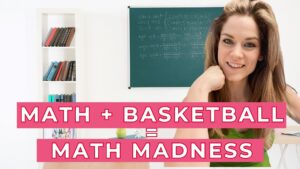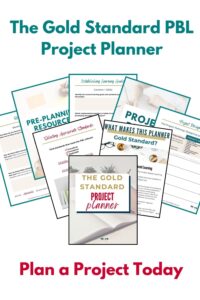Spring is the perfect time to shake things up—students are comfortable, routines are established, and there’s still time to make a big impact before the year ends. If you’ve been curious about project-based learning (PBL) but weren’t sure when to start, now is your chance.
In this episode, I’m diving into why spring is actually the best time to try PBL, how to start small (without overwhelming yourself), and a fun challenge you can try in the next two weeks to see what this teaching approach is really all about.
If you’re ready to experiment with engaging, real-world math and bring some fresh energy into your classroom, keep reading—or tune into the full episode for even more ideas!
🎧 Listen to the Episode Here
📺 Watch on YouTube Here
Why Spring Is the Sweet Spot for Trying Project-Based Learning
Let’s be real: by spring, everyone is tired of the same routines—including your students. But the good news? That makes this the perfect time to shake things up.
Here’s why spring is the ultimate PBL launchpad:
✅ Your students are already trained. They know your expectations, routines, and procedures.
✅ You’ve built relationships. That classroom community you worked so hard for? Use it to your advantage.
✅ There’s still time. A short, well-designed project can bring new energy without disrupting your pacing.
And let’s not forget—you’ve been working all year to build critical thinking, collaboration, and independence. Now it’s time to let students put those skills into action.
How to Start Small with PBL (Without Losing Your Mind)
If jumping into a full-scale project feels like too much right now, don’t worry. You don’t have to do it all at once.
Here are three low-risk, high-reward ways to start:
🔹 Try a one-day or one-week project.
The Stained Glass Project is perfect for this! It combines creativity and linear equations review in one hands-on, student-loved activity.
🔹 Connect to real-world math.
The Going Viral Exponential Project shows students how exponential functions model the spread of disease (or internet fame!). It kicks off with a fun Glo Germ experiment.
🔹 Use inquiry-first tasks.
The Rocket Project is great for introducing quadratics. Students launch their rockets first and then uncover the math behind it.
You can even start by tweaking a worksheet or activity you already planned—turn it into a student-driven challenge instead!
This Month’s PBL Challenge: Tweak ONE Lesson
Let’s make it even easier. Your challenge this month is simple:
🎯 Pick one lesson in the next two weeks and tweak it into a mini project.
Instead of assigning a worksheet on linear equations, have students:
- Design a phone plan
- Track and analyze sports stats
- Compare streaming subscriptions using slope and intercepts
The idea isn’t perfection—it’s experimentation. Try something new. Have fun with it. Then come share your win with me in the Modern Math Teachers Project Facebook Group or shoot me a quick text—I’d love to hear how it goes!
Grab Your FREE PBL Planning Guide
Need help planning your first (or next) project? Download my Gold Standard PBL Planning Guide—it’s the exact tool I’ve used for over a decade to design engaging, standards-aligned projects that keep students motivated even during spring fever.
👉 Grab the free PBL guide here
Featured Math Projects from This Episode
🖼️ Stained Glass Linear Equations Project
🦠 Going Viral: Exponential Functions Project
🚀 Rocket Launch: Quadratic Functions Project
Read more about each of these popular projects on the blog:
- Quick and Easy Linear Equations Project
- Make Exponential Functions Stick
- My Favorite Project- Rockets and Real World Quadratics
Spring is a great time to try new strategies, and PBL just might be the thing that reignites engagement—for your students and for you. Let this be the season you say yes to real, relevant, and rigorous math projects that make learning stick.
Until next time,
Keep engaging those students, keep trying new things, and as always… keep it real.









